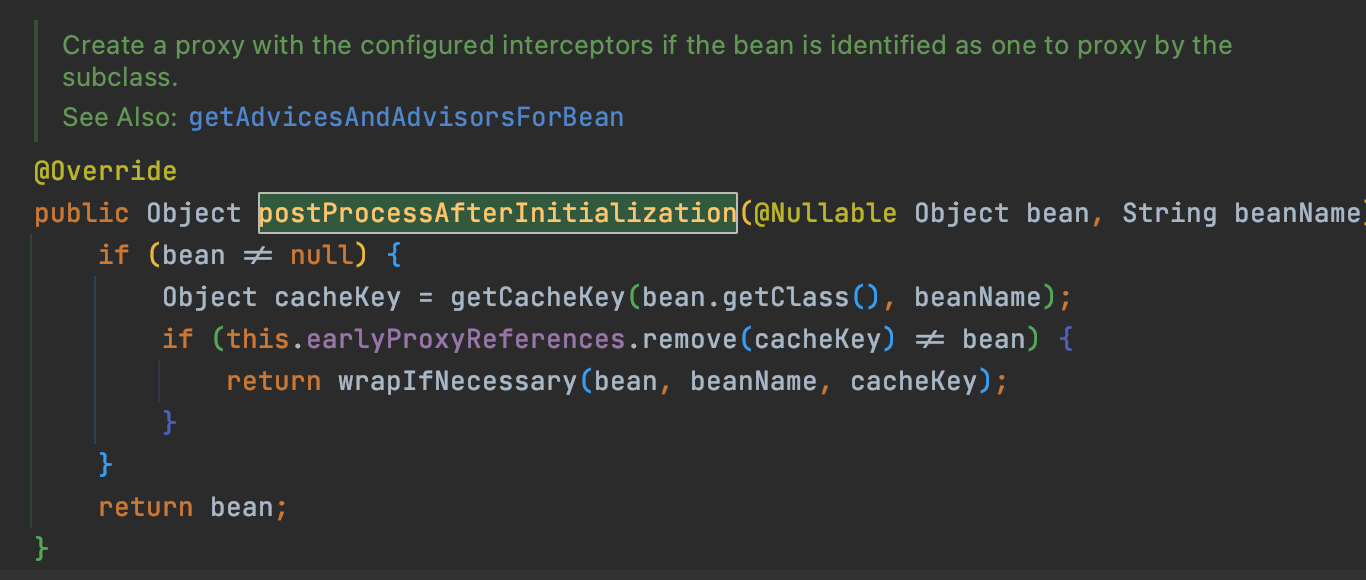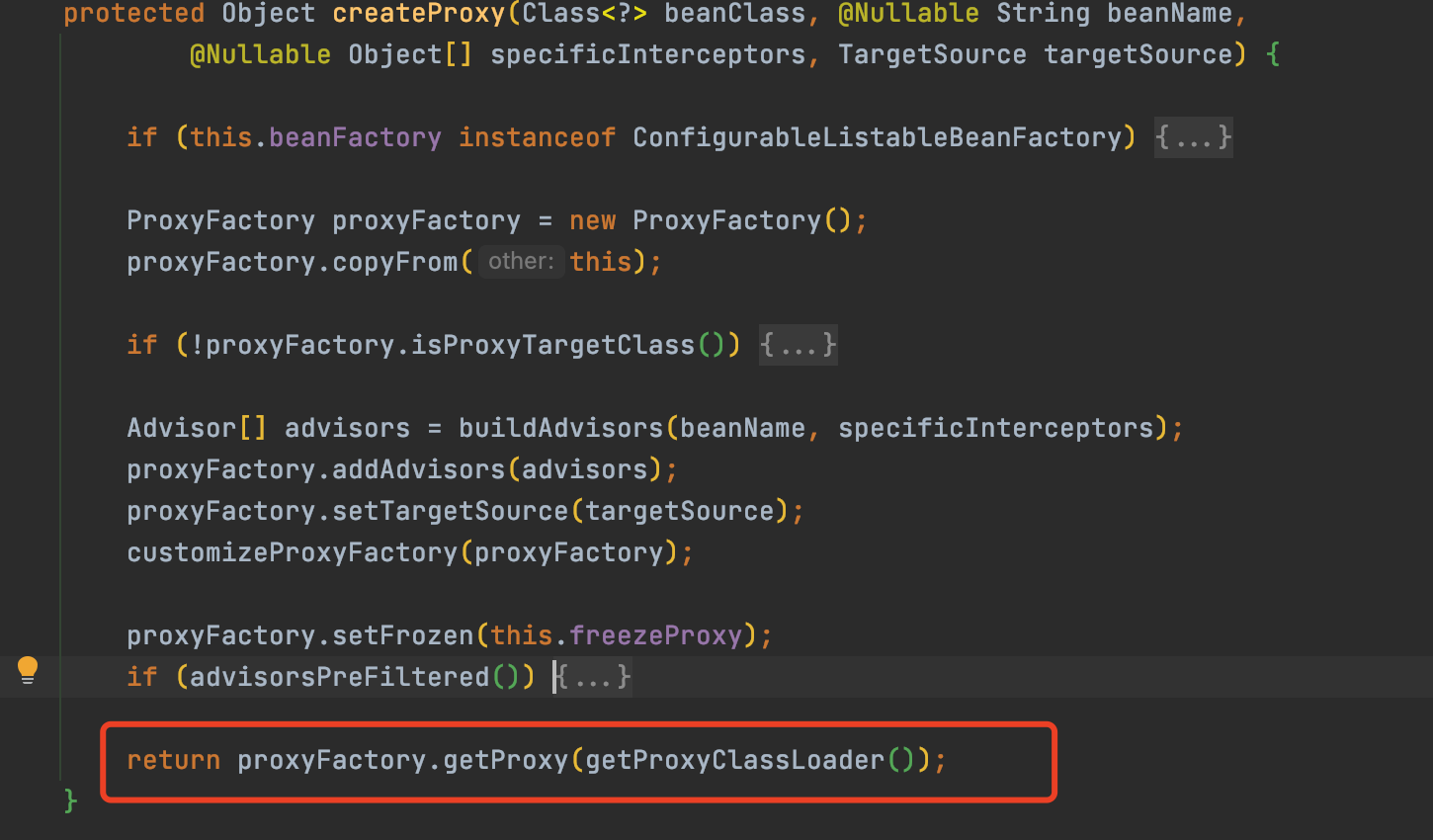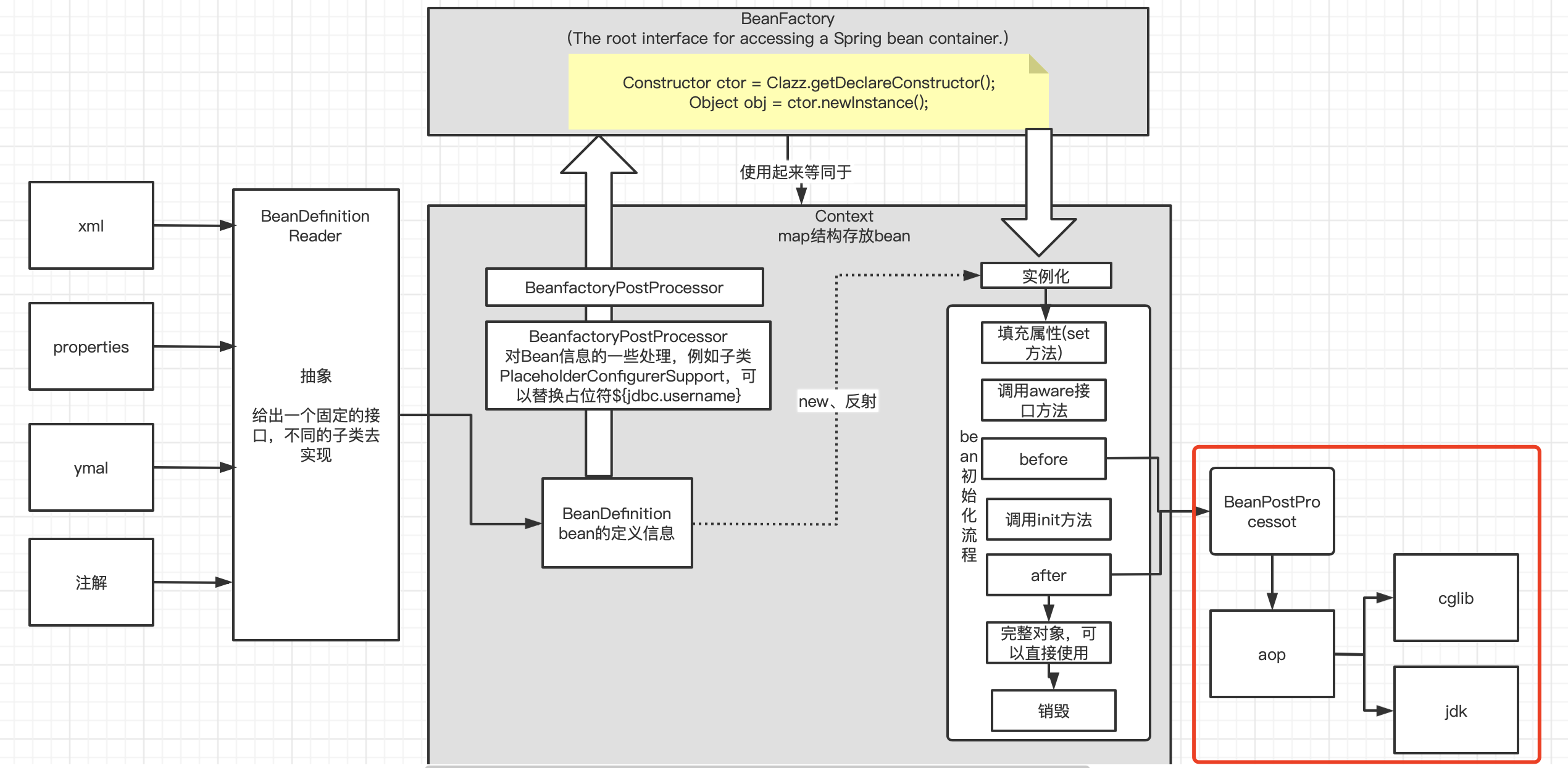一、关键图
二、寻找代理方法
BeanPostProcessor 的执行位置 https://www.yuque.com/wangchao-volk4/fdw9ek/vf0eas#Vyviy
BeanPostProcessor 的一个实现类 AbstractAutoProxyCreator 中的方法 postProcessAfterInitialization
关注 BeanPostProcessor 的两个方法,一个 before 一个 after
public interface BeanPostProcessor {/*** Apply this {@code BeanPostProcessor} to the given new bean instance <i>before</i> any bean* initialization callbacks (like InitializingBean's {@code afterPropertiesSet}* or a custom init-method). The bean will already be populated with property values.* The returned bean instance may be a wrapper around the original.* <p>The default implementation returns the given {@code bean} as-is.* @param bean the new bean instance* @param beanName the name of the bean* @return the bean instance to use, either the original or a wrapped one;* if {@code null}, no subsequent BeanPostProcessors will be invoked* @throws org.springframework.beans.BeansException in case of errors* @see org.springframework.beans.factory.InitializingBean#afterPropertiesSet*/@Nullabledefault Object postProcessBeforeInitialization(Object bean, String beanName) throws BeansException {return bean;}/*** Apply this {@code BeanPostProcessor} to the given new bean instance <i>after</i> any bean* initialization callbacks (like InitializingBean's {@code afterPropertiesSet}* or a custom init-method). The bean will already be populated with property values.* The returned bean instance may be a wrapper around the original.* <p>In case of a FactoryBean, this callback will be invoked for both the FactoryBean* instance and the objects created by the FactoryBean (as of Spring 2.0). The* post-processor can decide whether to apply to either the FactoryBean or created* objects or both through corresponding {@code bean instanceof FactoryBean} checks.* <p>This callback will also be invoked after a short-circuiting triggered by a* {@link InstantiationAwareBeanPostProcessor#postProcessBeforeInstantiation} method,* in contrast to all other {@code BeanPostProcessor} callbacks.* <p>The default implementation returns the given {@code bean} as-is.* @param bean the new bean instance* @param beanName the name of the bean* @return the bean instance to use, either the original or a wrapped one;* if {@code null}, no subsequent BeanPostProcessors will be invoked* @throws org.springframework.beans.BeansException in case of errors* @see org.springframework.beans.factory.InitializingBean#afterPropertiesSet* @see org.springframework.beans.factory.FactoryBean*/@Nullabledefault Object postProcessAfterInitialization(Object bean, String beanName) throws BeansException {return bean;}}

进入 方法 wrapIfNecessary 中的 createProxy 方法。找到最后的proxyFactory.getProxy(_getProxyClassLoader())
进入 _getProxy 方法,找到 aopProxy接口
三、总结
1、Sping 的aop 过程在对象实例化阶段,即 beanPostProcessor


